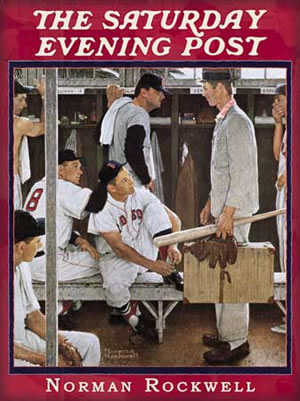How to Value and Sell Your Art
Finding a fair price for your art can be difficult and confusing. The art market changes so quickly that I cannot accurately help you value your art. For collectable prints, ads, and illustrations, eBay sets the market.
Here are a few suggestions for evaluating your art and making a plan for selling it at the best price.
The first step is identifying the artist. This would seem obvious and easy. Unfortunately, lots of famous artists signed their work in illegible format. Hopefully this site can help you decipher a signature and find out about the artist. On the other end of the scale, there are lots of talented artists who make great art, but never became famous. This does not mean their art in not good, and does not have value, just that it will be much more variable.

Once you have a good idea on the artist name, head over to eBay and see how popular they are. Often, you can confirm an artist id by examining the auction listings.
Ideally, you can search on the artists name with some context (Norman Rockwell – Saturday Evening Post), surf around through the various auctions and find similar items. This should give you a pretty good idea of the range of values for your artwork. Condition has lots to do with actual value, make sure you check the condition of the work in the auction description. If you choose to sell your item on eBay, make sure to note very completely the condition of the work.
Ideally you have something unique by a well known artist. That is a good combination for getting top price for your artwork.
A few more notes on eBay prices. There are two way to sell on eBay, auction and “buy it now”. The “buy it now” price is usually higher than the actual value, sometimes in the “maybe some sucker with pay that much” range. So, don’t get too excited by high values for artwork in the buy it now section.
A better way to gauge art value is to look at completed auctions. As anyone who has used eBay knows, all the action happens in the last few minutes, so current auction values are not very useful. To see completed auctions, you must sign up for an eBay account, this is free and easy, go ahead give it a try.
Once you are logged in, search on your artist name, then along the left side click the “completed listings” box. This will show you just auctions that are over, the prices will now be in red for unsold items and green for sold items. You are interested in the green (sold) prices. You can sort these results using to drop down at the top right of the listings. This information should give you a pretty good idea of the value of your collectable art. At least getting the general idea, a print of certain size by a particular artists is likely to be priced in the same range, even if the actual subject is slightly different.
If you cannot find any eBay results, or cannot identify the artist, you can still get some good ideas from eBay. For instance if you have an oil painting of an old sailing ship. You can search eBay for “sailing oil painting”. You will get a ton of results, sifting through these will help you find other artwork that is the same size, style, and frame format. With this information, you can decide if eBay is going to work for you, and if your work is selling well.
For lots of fine art or original art, it must be seen in person to be fully appreciated and to bring full value. For this kind of sale, local auction houses or antique stores are going to be a better sales venue.